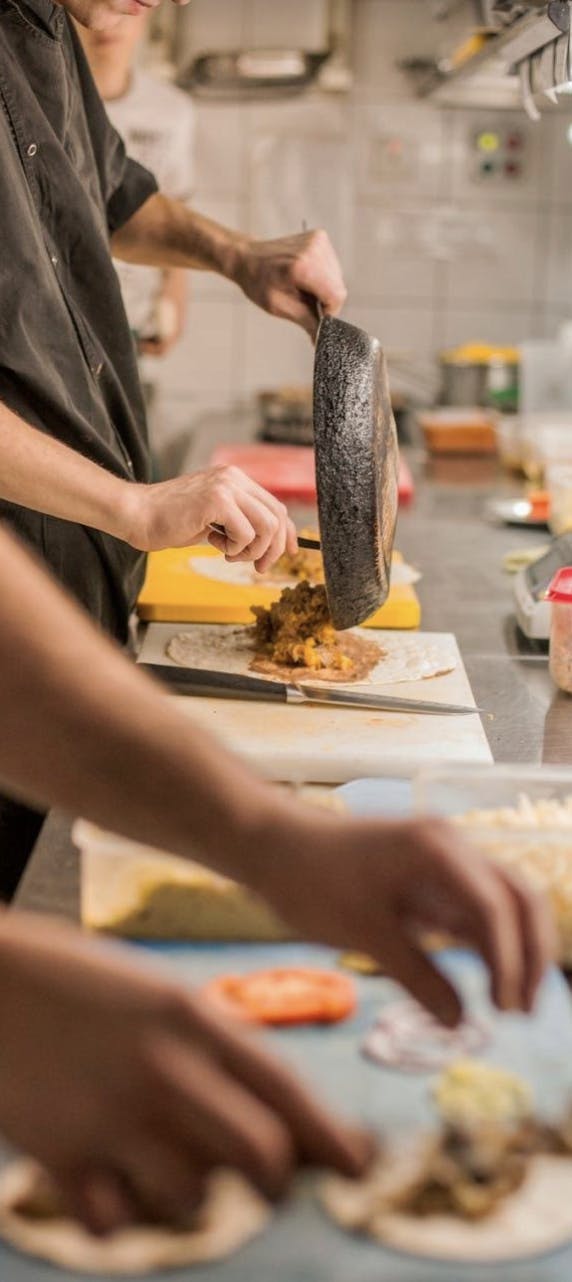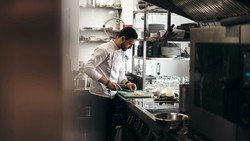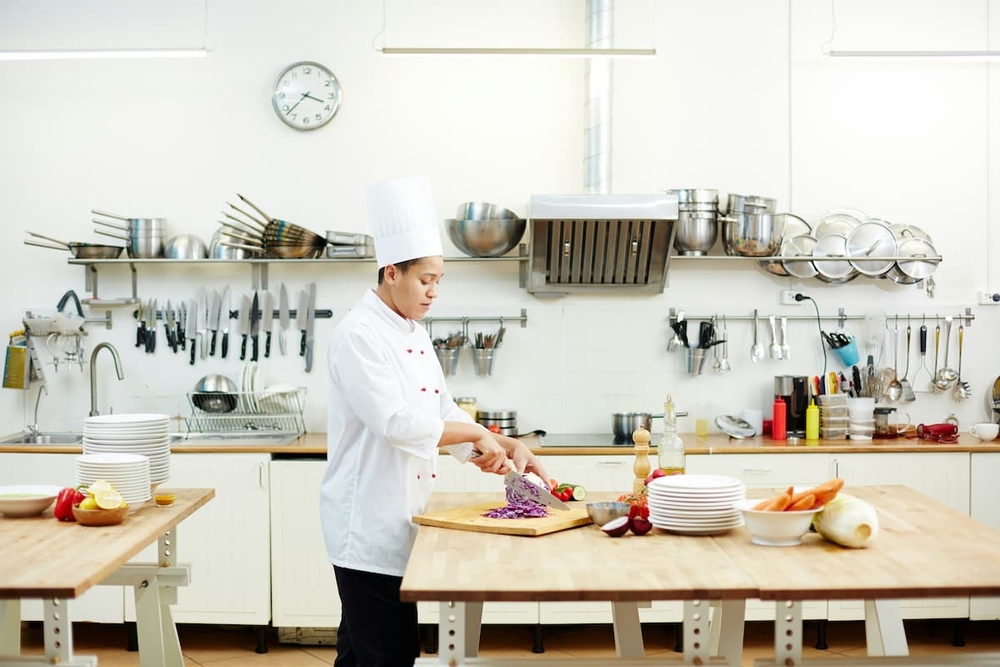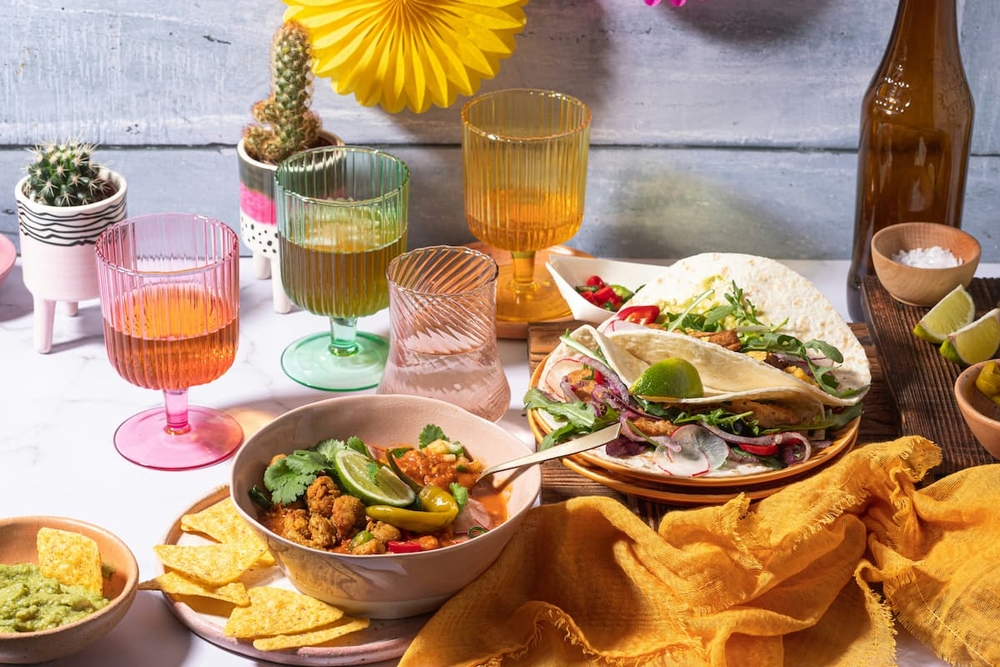The US Food Delivery Scene: What the Numbers Say
Table of Contents
CloudKitchens
How many tacos can be delivered from a 1000sqft restaurant?
The same amount as a 200sqft ghost kitchen.
Ordering food online has never been easier, or more popular. Whether it’s a quick lunch between meetings, a cozy dinner at home, or a last-minute craving for something sweet, online food delivery has become a part of daily life for millions across the U.S. But have you ever wondered just how big this industry has become?
The US food delivery statistics tell a fascinating story of changing habits, evolving business models, and the growing impact of technology on how we eat.
From the rise of ghost kitchens to shifting customer preferences, we’re diving into the data to understand what’s driving this booming food delivery industry—and what it means for both businesses and consumers.
Market Overview
If it feels like food delivery is everywhere, that’s because it is.
In 2023, the market size was estimated at over one trillion U.S. dollars, with 630 billion U.S. dollars attributed to platform-to-consumer services, according to Statista Research Department. This jump shows that more people are choosing to order food online.
The COVID-19 pandemic played a huge role in accelerating this change. McKinsey & Company reports that the food delivery market in the U.S. more than doubled during the pandemic, building on an already impressive 8% annual growth rate. And it’s not just an American phenomenon—worldwide, the market has tripled since 2017, now valued at over $150 billion.
Food Delivery Forecast for the Coming Years in US
The convenience of having meals delivered to our doorsteps has become an integral part of American life. In 2024, the online food delivery market in the United States was valued at approximately $353.3 billion, with the meal delivery segment accounting for about $95 billion.
And the growth isn’t slowing down anytime soon. Grand View Research projects that the global online food delivery market will continue expanding at a 10.3% compound annual growth rate (CAGR), reaching around $505.50 billion by 2030.
With urbanization, busier lifestyles, and tech innovations making ordering food easier than ever, this surge makes perfect sense.
This anticipated growth is driven by several factors, including the increasing reliance on smartphones, higher internet penetration, and a consumer preference for quick and convenient meal options.
As technology continues to evolve and lifestyles become busier, the demand for efficient food delivery service is expected to rise, solidifying its place in the daily routines of many Americans.
Target Audience and Their Preferences
Americans are embracing food delivery as a go-to solution for busy days, late-night cravings, and everything in between.
Who’s Ordering?
It’s no surprise that younger generations are the biggest fans of food delivery. According to YouGov, 40% of Gen Z and Millennials order from food delivery apps at least once a week. Meanwhile, only 21.5% of Gen X and just 10% of Baby Boomers do the same.
But it’s not just about age, where you live also plays a big role. Urban dwellers are leading the charge, with nearly 40% using food delivery apps weekly, compared to just 15.3% in rural areas.
What are They Ordering?
If you had to guess the most-ordered food in the U.S., what would it be? Pizza? Burgers?
Surprisingly, French fries take the crown, followed closely by chicken quesadillas and mozzarella sticks, according to DoorDash’s latest report. Comfort food clearly reigns supreme when it comes to delivery.
Spending Habits
It’s no secret that convenience comes at a price, and when it comes to food delivery, Americans are opening their wallets wide. According to a survey by Upgraded Points, the average American spends over $1,566 annually on food delivery services, with each order costing about $35.42.
This means that many are ordering approximately 3.7 times per month, dedicating around 3.7% of their annual income to having meals brought to their doorstep.
Understanding these preferences and behaviors is especially important for businesses aiming to cater to the evolving demands of the modern consumer.
Challenges
The food delivery industry in the United States has seen remarkable growth, becoming a staple in many Americans’ lives. However, this expansion comes with its own set of challenges that could impact its future trajectory.
Inflation
Inflation in the United States has reached levels not seen in decades, significantly affecting consumer purchasing power. As the cost of living rises, individuals are becoming more cautious with their spending, often cutting back on non-essential services like food delivery. A report from Morningstar indicates that inflation remains “sticky”, suggesting that elevated prices could persist for some time.
This economic pressure is evident in consumer behavior. According to USA Today, many Americans are reevaluating their spending habits, prioritizing essential goods and services over discretionary ones. This shift means that services perceived as non-essential, including food delivery, may experience a decline in demand as consumers tighten their belts.
Changing Consumer Behavior
Beyond the immediate impacts of inflation, broader shifts in consumer behavior are influencing the food delivery landscape. The COVID-19 pandemic altered how consumers interact with businesses, accelerating the adoption of digital services but also leading to evolving expectations. A Forbes article highlights several key changes:
- New expectations: Consumers now demand more from their delivery experiences, including faster service, real-time tracking, and personalized options.
- Value sensitivity: With economic uncertainties, there’s a growing emphasis on value. Consumers are seeking deals, discounts, and loyalty programs to make their spending more worthwhile.
- Sustainability concerns: Environmental awareness is influencing purchasing decisions. Many consumers prefer companies that demonstrate sustainable practices, such as eco-friendly packaging and reduced carbon footprints.
Business Opportunities
The food delivery industry in the United States is evolving rapidly, presenting a variety of business opportunities for entrepreneurs and established companies alike. Let’s explore some of the most promising areas:
Grocery Delivery
Instead of making weekly trips to the store, many consumers now prefer to have fresh produce, pantry staples, and household items delivered straight to their doorsteps. This shift in behavior has fueled rapid growth in the sector, and the numbers reflect its rising dominance.
According to Statista, the Grocery Delivery market in the U.S. is projected to generate $327.90 billion in revenue by 2025. Major players like Instacart, Amazon Fresh, and Walmart+ have capitalized on this demand, offering same-day and even express delivery options. Additionally, third-party food delivery services like DoorDash and Uber Eats have expanded into grocery delivery, further intensifying competition in the space.
Meal Kit Delivery
Meal kit services provide pre-portioned ingredients and recipes, making home cooking more accessible. The global meal kit delivery services market is projected to reach USD 88.97 billion by 2033, indicating significant growth potential.
Companies like Blue Apron have been leading this space, catering to consumers seeking convenience without compromising on the cooking experience.
Third-party Delivery Service
Third-party delivery platforms have become integral to the restaurant industry, offering logistics solutions that enable eateries to reach a broader customer base without investing in their own delivery infrastructure. However, these services often come with high commissions and limited control over the customer experience, presenting both opportunities and challenges for restaurants.
Dark Kitchens
Also known as ghost or cloud kitchens, dark kitchens are facilities optimized for preparing food exclusively for delivery. This model allows for reduced overhead costs and increased efficiency.
The U.S. dark kitchen market was valued at approximately USD 3.54 billion in 2023 and is expected to reach USD 104.3 billion by 2030, growing at a compound annual growth rate (CAGR) of 62.1%. This growth is driven by the rising demand for food delivery services and the cost advantages they offer to restaurateurs.
Are Dark Kitchens a Viable Investment?
Ghost kitchens—delivery-only restaurant spaces—are reshaping the food industry by cutting costs and maximizing efficiency. Without dine-in areas or front-of-house staff, these kitchens focus solely on fulfilling online orders, making them a smart investment in an era where delivery demand is booming.
With the U.S. dark kitchen market projected to hit $104.3 billion by 2030, this investment presents a high-growth opportunity. For restaurant owners and entrepreneurs looking for scalability, lower risk, and tech-driven operations, dark kitchens are proving to be a profitable and future-ready model.
CloudKitchens, a leading provider in this space, offers ready-to-use kitchen spaces, allowing food businesses to launch quickly with minimal upfront costs. Their model enables brands to operate multiple virtual restaurants from a single location, increasing revenue potential while keeping overhead low.
What are You Waiting For?
The food delivery industry is booming, and the numbers don’t lie, more people than ever are ordering meals online. If you’re looking for a smart, scalable investment, this is your moment. Dark kitchens are the key to unlocking higher profits with lower costs, faster setup, and zero dine-in expenses.
Unlike traditional restaurants, ghost kitchens allow you to operate multiple brands from one location, maximizing your reach and revenue with minimal risk. And with CloudKitchens, getting started has never been easier.
Ready to take the leap? Start your food business with CloudKitchens today!
DISCLAIMER: This information is provided for general informational purposes only and the content does not constitute an endorsement. CloudKitchens does not warrant the accuracy or completeness of any information, text, images/graphics, links, or other content contained within the blog content. We recommend that you consult with financial, legal, and business professionals for advice specific to your situation.
More insights & stories
There’s more where that came from.
Get in the know and check out our additional insights





